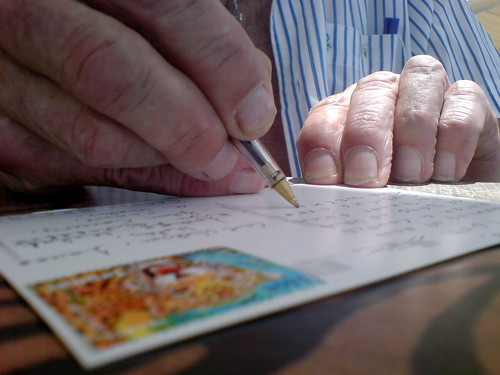RESEARCH TRIANGLE, N.C., May 6 (AScribe Newswire) -- It's not exactly Google, but the stunning cache of information Professor Robert Englund and his colleagues are making accessible on the Web is revolutionary - nearly one million lines of transcribed cuneiform, the earliest form of writing, with much more to come - documenting the social and literary worlds of Sumer, Babylonia, Assyria, and Persia, ancient lands comprising modern Iraq and parts of Iran, Syria, and Turkey. While the wedge-like cuneiform script was often incised on stone slabs that could weigh several tons, it was usually impressed onto more portable clay tablets that hardened quickly in the hot and dry climate of the region.
While roughly five million of these tablets are believed to be still buried in the ruin mounds of Iraq, awaiting archaeological discovery, some 500,000 are safely held in museum collections in London, Berlin, Istanbul, Russia, the United States, and elsewhere. These clay documents contain the Epic of Gilgamesh (first written in Sumerian and Akkadian around 1800 B.C. and carefully copied until 500 B.C.) and the Code of Hammurabi, as well as notes and calculations by merchants, doctors, and others from the Babylonian bureaucracy and from the general population, that illuminate what daily life was like thousands of years ago. But these priceless tablets and shards are so fragile that they have been known to crumble spontaneously, so transporting them from place to place for research is unheard of.
Enter Robert Englund, a professor in the Department of Near Eastern Languages and Cultures at UCLA, who has been sorting and compiling cuneiform data on computers since pre-Internet days, when he was a research assistant at the Free University of Berlin. Together with Peter Damerow at the Max Planck Institute for the History of Science in Berlin, Englund conceived and now directs the Cuneiform Digital Library Initiative (CDLI), an international group of Assyriologists, museum curators, and historians of science whose mission is to make the form and content of cuneiform tablets available online, eliminating the need for scholars to travel around the world to study them.
Initially funded by a $650,000 grant from the National Science Foundation and the National Endowment for the Humanities in 2000, CDLI received another $326,000 from the NEH last month. Englund will use $96,000 from these funds to create an English-Arabic web site of the materials in the Iraq Museum that include about 40,000 tablets and fragments; he will also work with the Iraqi Department of Antiquities and European research teams on developing an efficient means of capturing data that is sensitive to the goals of the department and the museum. Two other grants totaling over $1 million are still pending - one would support a learning game of Babylonian culture and the other would, in a joint venture with the University Museum of the University of Pennsylvania and the Oriental Institute of the University of Chicago, finance a virtual library of the greatest center of Sumerian learning, ancient Nippur.
Englund will receive still another accolade on May 25 in New York: The National Humanities Center's 2004 Richard W. Lyman Award, sponsored by the Rockefeller Foundation, which recognizes the innovative use of information technology in humanistic scholarship and teaching. "One of humankind's oldest writing systems comes to life in the newest technologies of communication and interpretation in Professor Englund's project," said James J. O'Donnell, provost of Georgetown University and chair of the panel of scholars that selected Englund. "He combines scholarly eminence with innovative technique in the service of learning - and in the service of all who care deeply about where we come from in our cultures."
The goals of Englund's project are indeed far-ranging and interdisciplinary; his digital library initiative is developing tools to provide access to Babylonian culture for all levels of online users, from grade school students to university researchers and journalists. Linguists will learn from the Sumerian grammar and lexicon made available through resources fed by the CDLI, in particular the Pennsylvania Sumerian Dictionary, as well as other related initiatives. Law enforcement agencies may also benefit, as CDLI data can help them identify and police the movement of stolen antiquities. Ultimately, however, Englund sees a more deeply humanistic value to his work.
"To my mind," he says, "access to the culture and to the minds of ancient Babylonians best serves to remind us that when the differences between us are seen most clearly, they disappear altogether."
Source Citation
"Cuneiform Goes Digital: UCLA Professor Illuminates Life in Ancient Iraq." Ascribe Higher Education News Service 6 May 2004. General OneFile. Web. 1 Feb. 2011.
Document URL
http://find.galegroup.com/gps/infomark.do?&contentSet=IAC-Documents&type=retrieve&tabID=T004&prodId=IPS&docId=A116283351&source=gale&srcprod=ITOF&userGroupName=18551_mcpls&version=1.0
Gale Document Number:A116283351

Tuesday, February 1, 2011
Cuneiform Goes Digital: UCLA Professor Illuminates Life in Ancient Iraq.
Subscribe to:
Post Comments (Atom)


No comments:
Post a Comment